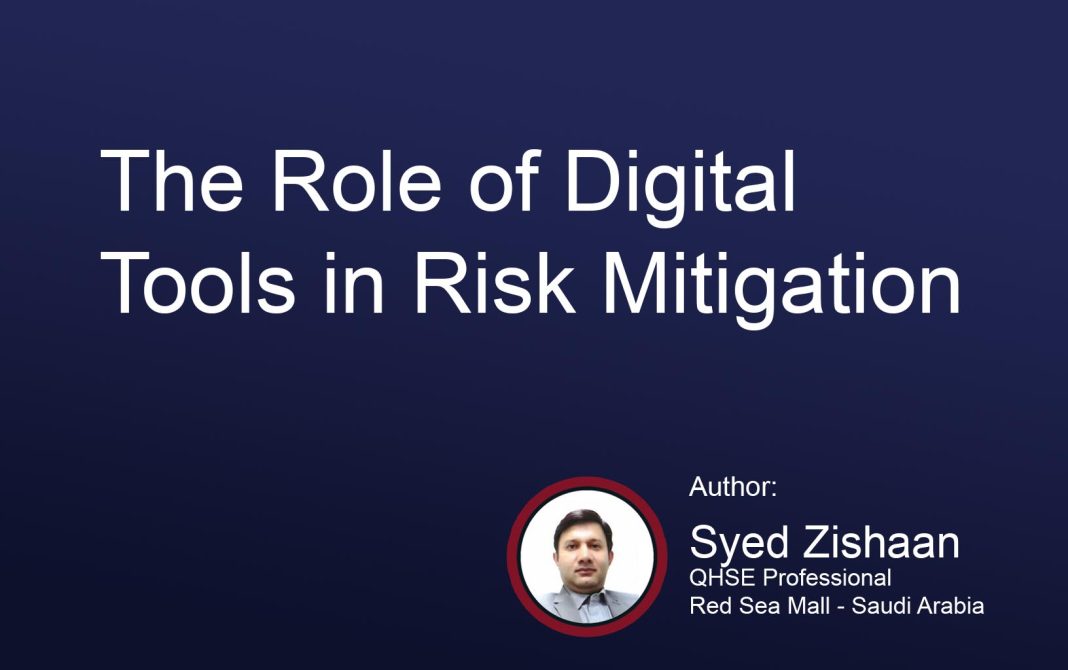In today’s fast-paced and interconnected world, businesses and organizations face numerous risks—ranging from cybersecurity threats and financial losses to operational disruptions and compliance failures. To navigate these challenges effectively, companies are increasingly turning to digital tools that enhance risk identification, assessment, and mitigation. Digital technologies such as artificial intelligence (AI), big data analytics, blockchain, and cloud computing are transforming risk management by providing real-time insights, predictive capabilities, and automated responses.
1. Enhanced Risk Identification and Assessment
One of the primary benefits of digital tools in risk mitigation is their ability to identify and assess risks more accurately and efficiently. Traditional risk management often relies on historical data and manual processes, which can be slow and prone to human error. In contrast, modern analytics tools leverage AI and machine learning to process vast amounts of data, detect patterns, and predict potential risks before they escalate.
For example, financial institutions use AI-powered fraud detection systems to monitor transactions in real time, flagging suspicious activities that may indicate cybercrime or insider threats. Similarly, predictive analytics in supply chain management helps businesses anticipate disruptions caused by geopolitical events, natural disasters, or supplier failures, allowing them to take proactive measures.
2. Real-Time Monitoring and Response
Digital tools enable continuous monitoring of risks across various business functions. Internet of Things (IoT) sensors, for instance, can track equipment performance in manufacturing plants, detecting anomalies that may lead to breakdowns or safety hazards. Cloud-based risk management platforms provide centralized dashboards where organizations can monitor threats in real time and respond swiftly.
Cybersecurity is another critical area where real-time monitoring plays a vital role. Advanced threat detection systems use behavioral analytics to identify unusual network activity, automatically triggering countermeasures such as blocking malicious IP addresses or isolating compromised systems. This reduces the window of exposure and minimizes potential damage.
3. Automation for Faster Risk Mitigation
Automation is a game-changer in risk management, reducing reliance on manual processes and improving response times. Robotic Process Automation (RPA) can handle repetitive tasks such as compliance checks, audit logging, and regulatory reporting, ensuring accuracy while freeing up human resources for strategic decision-making.
In disaster recovery, automated backup systems ensure that critical data is preserved and can be quickly restored in case of a cyberattack or system failure. Chatbots and AI-driven customer service tools also help mitigate reputational risks by providing instant support and resolving issues before they escalate into public relations crises.
4. Improved Compliance and Governance
Regulatory compliance is a major concern for businesses, particularly in industries like finance, healthcare, and energy. Digital tools simplify compliance management by automating documentation, tracking regulatory changes, and generating audit reports. Blockchain technology, for instance, offers transparent and tamper-proof record-keeping, which is invaluable for maintaining compliance with financial transactions and supply chain operations.
Additionally, AI-powered legal tech tools analyze contracts and policies to identify potential compliance risks, ensuring that businesses adhere to industry standards and avoid costly penalties.
5. Data-Driven Decision Making
Digital tools empower organizations with data-driven insights, allowing them to make informed risk management decisions. Business intelligence platforms aggregate data from multiple sources, providing executives with a holistic view of risks and opportunities. Scenario analysis tools simulate different risk scenarios, helping companies evaluate the potential impact of various strategies before implementation.
For example, insurance companies use telematics and AI to assess driver behavior, enabling them to adjust premiums based on real risk factors rather than generalized statistics.
Conclusion
The integration of digital tools into risk management strategies has revolutionized how businesses anticipate, monitor, and mitigate threats. By leveraging AI, automation, real-time analytics, and blockchain, organizations can enhance their resilience, reduce vulnerabilities, and maintain operational continuity. As technology continues to evolve, the role of digital tools in risk mitigation will only grow, making them indispensable for sustainable business success in an increasingly uncertain world.
Investing in the right digital risk management solutions is no longer optional, is a necessity for staying competitive and secure in the digital age.
About the Author:
Syed Zishaan Ali Qadri is a seasoned Quality, Health & Safety (QHS) professional with over 22 years of cross-industry experience in developing and leading management systems. With a strong background in ISO certifications (9001, 45001, 22000, HACCP), risk management, and team training, he has played a pivotal role in improving operational safety and quality in organizations such as Red Sea Mall, Al Kifah Holding, and FAHSS/TUV-NORD. Zishaan is also a certified lead auditor and NEBOSH-certified expert, passionate about fostering a culture of continuous improvement and compliance. His work has impacted thousands of professionals and supported large-scale projects with a proven safety record.







